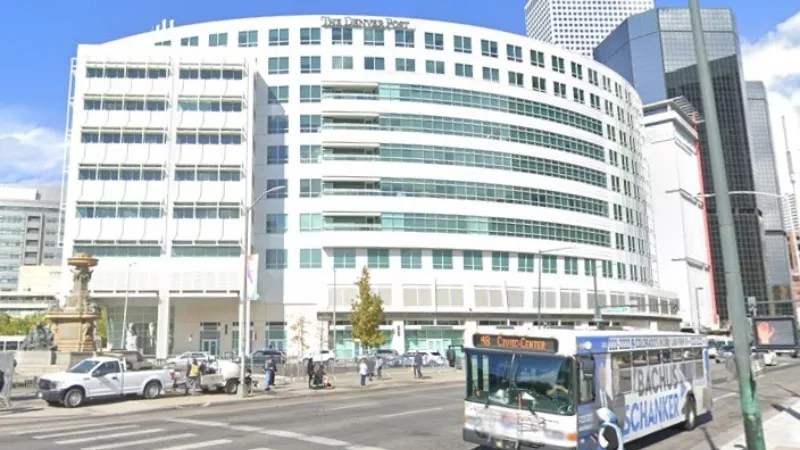
Google Maps

Audio By Carbonatix
COVID-19 stats related to cases, hospitalizations and outbreaks across the state have plummeted over recent weeks – a trend that officials with the Colorado Department of Public Health and Environment have attributed to the combination of high vaccination rates and increased immunity among individuals who’ve recovered after catching the disease.
But in Denver, there appear to be additional reasons for the declining data, including the fact that some cases aren’t counted. After a source told Westword that he’d learned through unofficial channels that a person at a public meeting he’d attended last month had tested positive, the Denver Department of Public Health and Environment confirmed that it doesn’t routinely let attendees know about such situations.
The February meeting was attended by around a dozen people, and the next morning, one of them tested positive for COVID. That person alerted Westword‘s source, who subsequently asked the official who’d led the meeting if everyone on hand would be contacted by the DDPHE about the possible risk. The official replied that there was no mechanism in place for such an alert.
Courtney Ronner, a COVID-19 marketing and communication specialist for the Denver health department, essentially confirms this assertion. Although the DDPHE was unfamiliar with a positive case at that meeting, Ronner notes that such notifications typically come through “case investigations, and, as a result, we do not send out widespread notifications for an exposure at an event or meeting.”
Will you step up to support Westword this year?
At Westword, we’re small and scrappy — and we make the most of every dollar from our supporters. Right now, we’re $22,750 away from reaching our December 31 goal of $50,000. If you’ve ever learned something new, stayed informed, or felt more connected because of Westword, now’s the time to give back.
She adds that “attendees of an event may also be notified of an exposure if they are signed up for the state’s exposure notification app, and the person they were exposed to is and reports it.” However, she continues, “with widespread immunity due to both vaccines and recent exposures to Omicron, exposure notifications are less meaningful at this stage of the pandemic.”
Ronner adds: “DDPHE’s contact tracing/case investigation team follows up with all contacts reported to us as long as we have good contact info and they answer the phone. We encourage facilities to send out notifications if they are aware of an exposure and have contact information for those who attended to follow up, but it’s not a requirement.”
Other sources tell Westword that many schools in Denver have stopped reporting COVID cases to the department after months of being told that anything other than massive spread is no problem and quarantining isn’t necessary.
But Ronner stresses that “schools are still required to report all COVID-19 cases to DDPHE per the regulations set forth by the Colorado Department of Public Health and Environment. We will continue to receive those reports as new guidance for disease control measures in schools is implemented.”
She acknowledges, though, that “the new guidance removes the requirement for schools to conduct individual case interviews/contact tracing, as well as removing the requirement to quarantine students for non-household exposures. There are times when a school could have five or more cases but not be classified as an outbreak if cases are clearly not associated,” because they occurred in distinct buildings or classrooms.
Another indication that the DDPHE is dialing back: The department didn’t send out a COVID status report last week, after doing so consistently for months. The latest data on its COVID-19 dashboard shows a 64.5 percent decline in cases, a 54.5 percent decrease in deaths, and an 11.9 percent dip in hospitalizations: 35 for the city as a whole per the most recent update. Other figures date to March 8 (a 24.3 one-week case rate per 100,000 residents, a 3 percent positivity rate on 1,037 tests) and March 9 (a 2.7 percent seven-day average positivity rate and 1.3 percent of Denver residents tested over the previous seven days).
Even as the numbers drop, Ronner notes that “getting vaccinated and boosted are the best ways to protect yourself from COVID-19, as they largely provide protection from severe illness even if exposed. Anyone experiencing symptoms should get tested and continue to wear a face covering.”